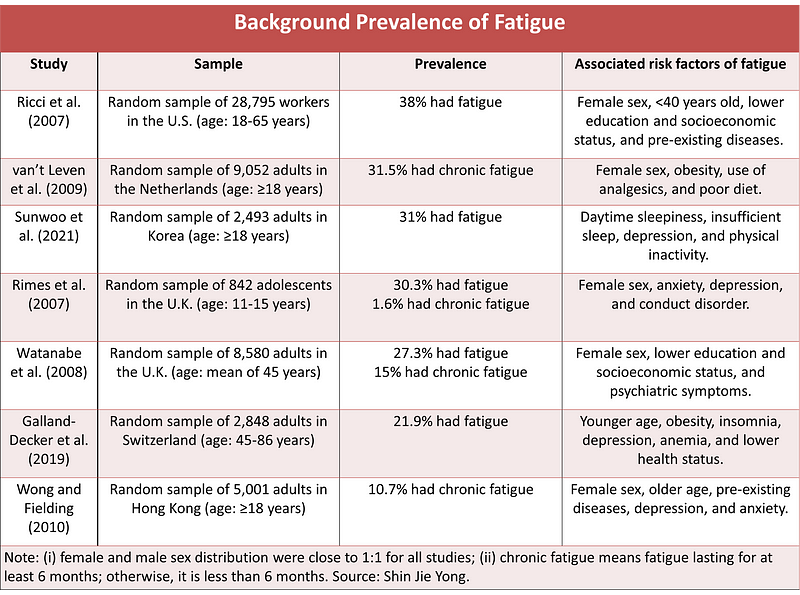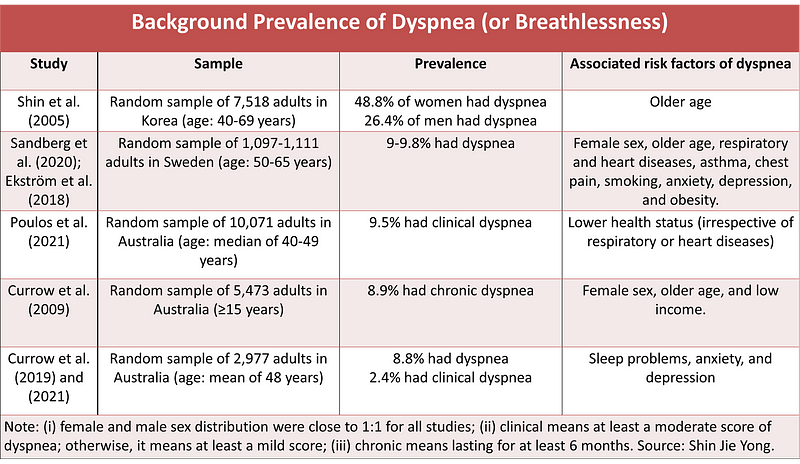Understanding Long-Covid: Prevalence and Misconceptions
Written on
In a recent comprehensive meta-analysis, researchers led by Chen et al. from the University of Michigan's School of Public Health evaluated data from 34 studies, concluding that the global prevalence of long-Covid is approximately 43% among individuals who tested positive for Covid-19. This statistic has been widely reported in various media outlets.
If this 43% figure holds true, it implies that over 180 million individuals worldwide may currently experience or have experienced long-Covid, given that Covid-19 cases had exceeded 445 million, with over 6 million deaths reported by early March 2022. This translates to a nearly 50% risk of developing long-Covid upon testing positive for the virus. However, it is crucial to consider the potential overestimation of this prevalence. Here’s why:
What Meta-Analyses Reveal
- In an early meta-analysis, Lopez-Leon et al. reviewed 15 studies on long-Covid—characterized as having at least one symptom lasting between 14 and 110 days post-SARS-CoV-2 infection—published before January 1, 2021. Their analysis indicated that 80% of 47,910 Covid-19 cases experienced long-Covid symptoms, with fatigue, headache, attention disorder, hair loss, and breathlessness being the most common.
- Another analysis by Iqbal et al., as of March 6, 2021, included 43 studies and found that symptoms like fatigue and breathlessness occurred in 37% and 35% of Covid-19 cases, respectively, during the acute phase (<12 weeks). In chronic cases (?12 weeks), fatigue and sleep disturbances were prevalent in 48% and 44% of cases.
- A later analysis by Ceban et al. synthesized 74 studies, defining long-Covid as symptoms persisting for at least 12 weeks after infection. They found that 32% of Covid-19 cases reported fatigue, while cognitive impairment affected 22%.
- The most recent meta-analysis by Chen et al. included data from 886,388 cases and defined long-Covid as having at least one symptom for 28 days post-diagnosis. They reported a long-Covid prevalence of 43% overall, with specific rates of 57% in previously hospitalized cases compared to 31% in non-hospitalized ones.
While these findings suggest a high prevalence of long-Covid—ranging from 30% to 80%—they fail to account for background prevalence, which is essential for a more accurate understanding.
High Background Prevalence
A significant limitation in long-Covid research is the lack of assessment for new-onset symptoms. As noted by Ceban et al., most studies did not clarify whether symptoms existed prior to Covid-19 infection. If they did, the reported long-Covid figures may inadvertently include symptoms that were already present, leading to an inflated prevalence rate.
Many studies also lack a non-Covid control group, which is crucial for discerning whether symptoms would have arisen independently of Covid-19 infection. As Ceban et al. highlighted, common methodological shortcomings include not including a non-exposed group and failing to determine if symptoms were present prior to infection.
Data from pre-pandemic studies indicate that around 10% to 30% of the general population experiences symptoms similar to those reported in long-Covid, such as fatigue and cognitive impairments. Thus, the perceived prevalence of long-Covid could be significantly overestimated when not accounting for these background conditions.
Recent estimates suggest that the reported 43% long-Covid prevalence might actually reflect a combination of existing conditions and new-onset symptoms, with only 11% of non-severe and 37% of severe Covid-19 cases likely developing true long-Covid.
Controlled Research Findings
Several controlled studies provide insight into the true prevalence of long-Covid symptoms. For instance, a study conducted by Logue et al. found that 29% of Covid-19 survivors experienced at least one symptom at the nine-month mark, compared to 5% in a small control group. However, this control group was limited in size and may not accurately represent the general population.
In a significant controlled study by Caspersen et al., which followed over 70,000 individuals, only 1% were diagnosed with Covid-19. The results indicated that excess cases of symptoms like altered smell and fatigue were approximately 16% and 14%, respectively, suggesting that the actual prevalence of long-Covid symptoms may be much lower than previously reported.
In conclusion, while the impact of long-Covid is certainly recognized, the actual prevalence may be more accurately estimated between 10% and 20% of Covid-19 cases, influenced by factors such as vaccination status and pre-existing conditions. Furthermore, the lack of comprehensive testing and the potential for underreported cases complicate the reliability of current statistics.
In examining these findings, it becomes evident that while long-Covid is a genuine concern, a nuanced understanding of its prevalence, particularly in light of background conditions, is essential for future research and public health strategies.


